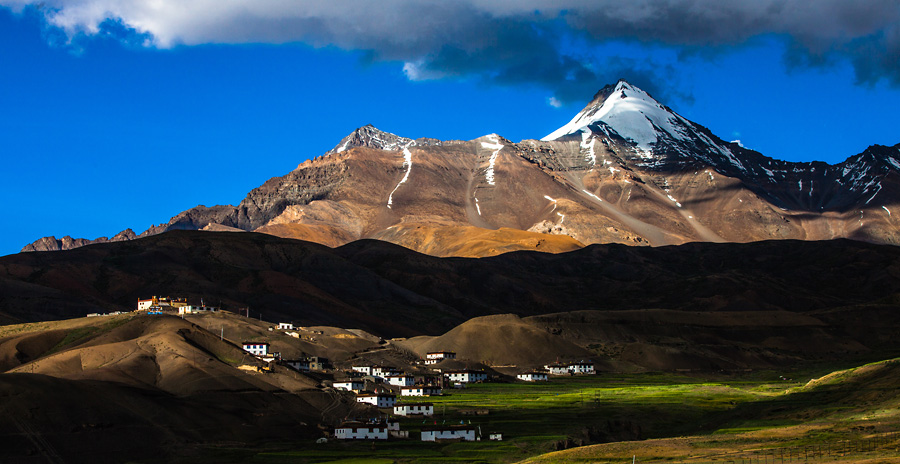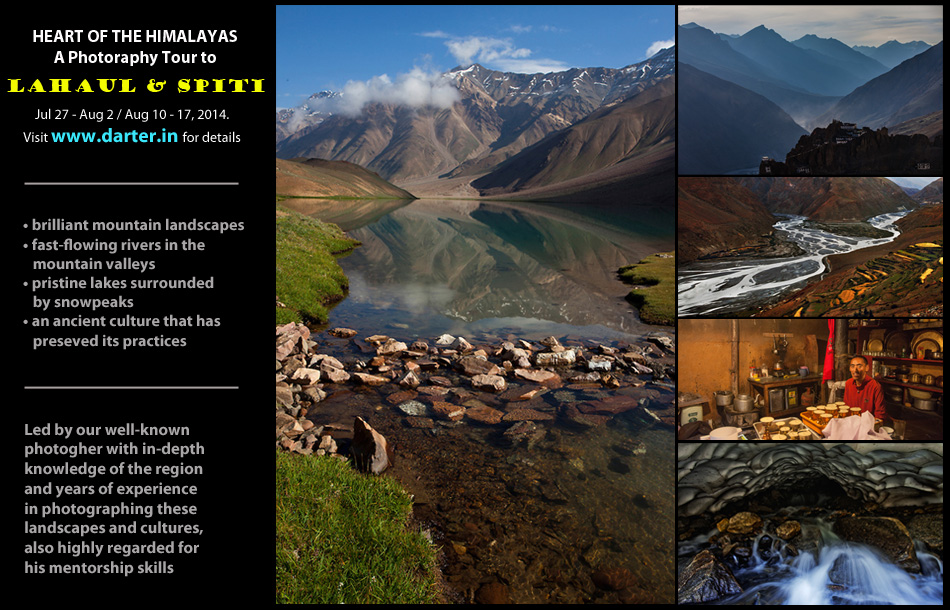
How is it to live in a village at the base of a 20,000 feet high mountain forever covered in snow? How does one endure winter temperatures that can go down to -20C or lower? What is like to be in the company of yaks in summer and snow-leopards in winter? What does it take to survive in such a place for centuries, when modern facilities did not exist? I went to Langza to find answers.

Langza Village, with 6,300m high Chau Chau Kang Nilda Peak in the background.
Langza is no ordinary village. Located above 14,000 feet in Spiti Valley at the crossroads between Tibet and India, where the sun shines strongly over a brown treeless mountainscape in summers, where no rain falls during the monsoons and the winter’s snow can hide your footprints for four months, people have lived for a millennium with little interaction with the outside world. Before the modern world could connect with the people of Spiti, they lived an isolated, nearly self-subsistent life depending on their crop of barley for cereals and livestock for every other needs. They worked hard through the summer months, growing the year’s food and herding their sheep into the high-altitude meadows. The barren winters were for a slower pace of life, for festivities, celebrations and weddings, where barley chang flowed free from a yak-horn cup and the feet moved freely to the rhythm of drums. Only the strongest and the bravest travelled far and wide, to procure salt for the meal and timber for the houses. Everything else was made at home.
My next Himalayan Photography Tour is to the finest mountain landscapes and cultural centers of Lahaul & Spiti in Himachal Pradesh – July/August 2014. Join me on this tour to learn the nuances of making great landscape images. See Heart of the Himalayas Lahaul & Spiti Photography Tour for details.
To get an idea of what this place is like, do read these posts I wrote about my journeys to the region.

My photography tour to the finest mountain landscapes and cultural centers of Lahaul & Spiti in Himachal (Jul/Aug 2014). Join us – see http://bit.ly/lahaul-spiti-phototour for details.
In July this year, I spent a week travelling through the high Himalayan region of Lahaul & Spiti in Himachal Pradesh. This was my fourth visit to the region and I was leading a small group of photography enthusiasts with me. Being a regular visitor to these places, I had had some definite ideas about the subjects that I wanted to shoot, the moods that I wanted to portray and also had a fairly good idea about the time of the day that would help me make those images.
In Dhankar Monastery, seen in the photograph, I was keen to portray the remoteness of the place and the precarious location where the monastery stood. I had also realized that the evening light from behind the monastery would help differentiate the crag on which the buildings were located and the high mountains that dominated the landscape behind it. Here is the image I created that evening. The dust rising from behind helped enhance the drama in the scene.

There is, in fact, much more drama than what is seen in the photograph. At the valley just below the monastery is the confluences of Spiti and Pin Rivers, and the view is fabulous from the place where I was shooting. Yet, I decided to exclude that from the frame, since having too many elements of interest may have driven away attention from the main story and would work counterproductive in this situation.



